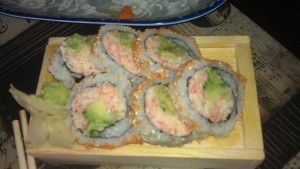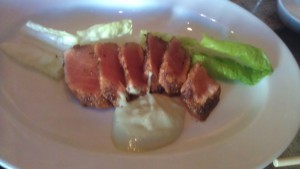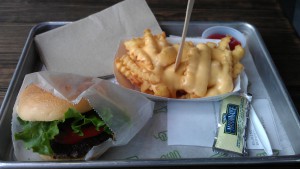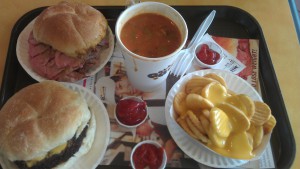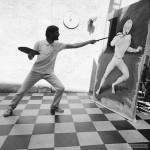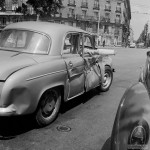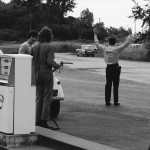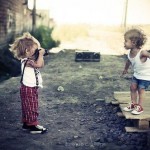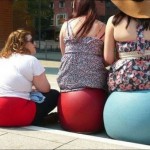Contact Information
Professor Sandra Cheng
Office: Namm 602B
Office Hours: Tu/Th 9-10 am or
by appointment
Office Tel: 718-260-5003
Email: scheng@citytech.cuny.eduHelpful Links
 New York Times Arts
New York Times ArtsBlogroll
Categories
Meta
FOOD IS ART
Posted in Uncategorized
2 Comments
Photography & Early Film
This short film was very interesting because aside from bieng the first “Sci-fi” movie it was actually more of a comedy. I could tell that it was very primitive because the camera was stationed and didn’t move. The reason for this was because the camera couldn’t move or else it would become distorted and the quality would be low. Simliraties between photgraphy and the film were that they both served as entertainment, documentation, & eventually as art. They both had to be stationed to produce quailty work. Another similarty was the revolutionary impact it made to society. Some differences would be photography is still unlike film which has movement. Another difference would be that film had an advantage over photgraphy in terms of entertainment. Withouth photgraphy, film would’ve never existed. More than a century later, we still have photography and film that serve as entertainment and education. They play a major role in our lives and i can’t imagine what i would do without it.
Pictures of Pictures
Pictures of Pictures? New technology is constantly shaping our lives in every way. The way we document and take notes usually involves our cellphone camera, which by the way keeps getting more sophisticated every couple of months. Everytime i go to a museum i find myself taking pictures of pictures, which is kind of interesting when you think about it. I think it’s a great way to document improtant information and preserve memories of a good experience. Painters all over the world did the same exact thing before techonlogy came into the picture. They painted a portrait or a landscape to document and preserve memory. The Venice Biennale exhibits international art so this would be a perfect setting to reveal the ‘onion effect” like Smith stated in his New York Times article.
***
As a “thank you” and “goodbye” I would like to share with the class some photos that I found inspirational for me. They are something that I stumbled upon during this semester. They are quirky, funny, emotional, original and creative… enjoy.
Posted in Uncategorized
Leave a comment
A Glimpse Inside Gaza-War Photography Today
Hicks’ photographs show the true nature of war in the rawest form, fatalities, causalities and injuries. It shows how war can make us less human by hurting the innocent and causing mayhem in your surroundings. Documentation of war is important in that it reminds us of the wrong we have done and what happens as a result of egos clashing. But at the same time, as horrible as it sounds, during wartime, some amazing photos can be captured because very rare moments are captured and most of the moments during wartime are candid and offer a sense of realism that is not shown elsewhere. As for photo editors, I think it is sometimes necessary for them to edit some things out, to hide some stuff that may be too painful for someone to see, but at the same time I don’t think they should edit anything out, just in case the things they edit out might provide closure or answers to questions people ask about the situation on the events that are occurring.
Posted in Uncategorized
Leave a comment
Pictures of Pictures
I most certainly do agree with Roberta Smith after reading her article. She said “The camera is a way of connecting… and collecting fleeting experiences.” We take pictures of photos so we can share with our friends and people around the world. Some people might not be able to experience what we can and that is physically seeing a photo in an exhibit or museum so we snap a photo of it and post it on the internet to share around the world. That might not be the only reason we snap photos of pictures. That specific photo might be visually pleasing to us and we want to remember what was it that caught our attention when we review the picture down the road. We want to capture moments in life that we want to remember, because we can’t live in the moment so that’s what cameras are for. We capture the moments we want to cherish and reminisce. Personally for me I take photos of pictures or photography in general is because my memory is not very good, and there are moments in my life that I want to remember whether good or bad I get something out of it that helps shape and mold me as a person and that is what photography is about, taking a photo of a moment that you want to revisit at any time just so you can enjoy and recall what happened in that photo and what made you feel the way you do.
Posted in Uncategorized
Leave a comment
The Greatest War Photograph and Robert Capa
I find Whelan’s argument convincing because of the fact that he is throwing statement after statement, whether or not they are true, we won’t know because we were never actually there. As for the photo being staged I don’t think it was, but something I do question is how he took the photo without being interrupted. Since it was taken during the war, wouldn’t the enemy be able to spot him taking a photo and raise suspicion on what that person was doing next the person that they were shooting is doing. Authenticity doesn’t matter in this case because it is a really great photo, from the composition to the timing and meaning of the photo, it makes a great conversation piece even if it was fake or staged, and one thing should be mentioned, if you ask a person if this picture looked staged, I think they will say it isn’t. When I first saw it I thought he was trying to sit down on the ground after a long day from the war until I found out it was taken the moment he got shot and was falling down from the force of the bullet and was living his last moments. This best part about this photo is the fact that Capa took a photo of someone’s last moment before they passed away, and in a way, it is a very intimate moment that not everyone would be willing to share with the world.
Posted in Uncategorized
Leave a comment
A Glimpse Inside Gaza-War Photography Today
Hick’s photographs shows us the hardcore reality of the damages a war like the one in Gaza can affect their people. All we hear about over here in the US is about the bombings, attacks, etc. but we never get to really see what occurred. Seeing all the people and children and the reactions on their faces was heartbreaking. All of Hick’s photographs don’t need much explanation, they tell millions of stories on their own. We never really actually get to see it through the people in third world countries eyes; through their point of view. All of these wars affect us but these photos show us who really deals with it every single day of their lives. War photography in my opinion, is a great way to document all the suffering, raw, and cold moments the people in those countries go through.
Posted in Uncategorized
Leave a comment
The Greatest War Photograph and Robert Capa
Before reading the article, I never questioned if Capa’s photograph was staged or not. In my opinion it looks like he was at the right place, at the right time. The solider looks like he was just shot and he was ready to break his fall. The way his body is positioned is a natural position when someone is falling on their back side. He’s ready to let his gun go and you can see the painful expression on his face about to come up. Whelan’s arguments were convincing but I don’t think they really mattered. I do however agree with Whelan when he states “Federico could have posed for the photograph before he was killed,” and maybe that’s why he was posing that way. Robert Capa had a great reputation in the photography world, so even if some accused him of staging a historic image, it didn’t affect the way people saw him.
Posted in Uncategorized
Leave a comment
Photographing the Beginning of the Civil Rights Movement
I feel like both Frank and Count’s photographs were equally powerful and both showed the hardships of American society in the Fifties. Count and Frank’s work both captured REAL moments. Frank captured the true, sad and empty emotions all Americans were feeling during the fifties. Many didn’t like his work because they thought they were too “depressing”. The people living the American dream were supposed to be happy and loving life, but his photos showed the opposite. While Frank’s controversial photo captured a real life racist moment. You can feel all the emotion Hazel Bryan felt while she was screaming at Elizabeth Eckford, “One was trying to go to school; the other one didn’t want her there” through his photograph. Both photographers did a great job at capturing historic moments whether people think of it as art or not.
Posted in Uncategorized
Leave a comment



